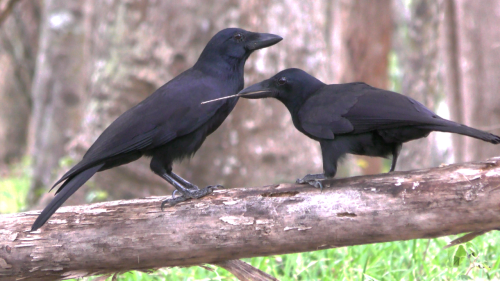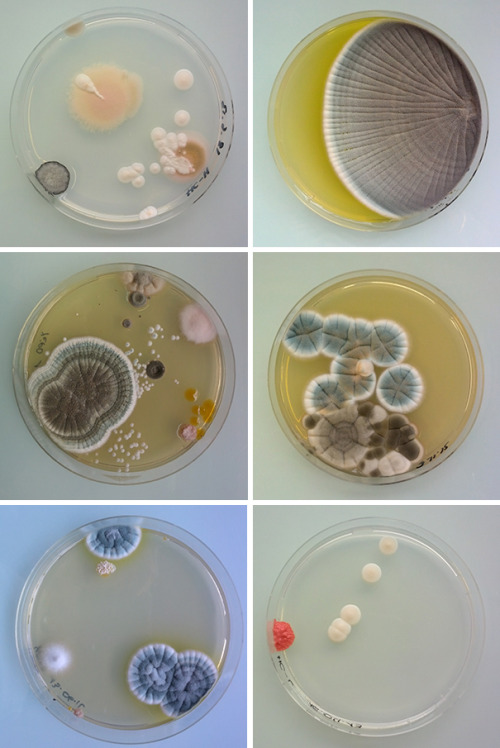I Got To Work With Some HeLa Cells Today!

i got to work with some HeLa cells today!
as cool of an experience as this was and as interesting as these things are, it’s always important to acknowledge the bad along with the good. Henrietta Lacks’ cells revolutionized so many areas of research, but she deserved so much better.
working with these cells today just really reminded me of the duality of many scientific developments. many things have come with great cost and harm and i think that’s something important to keep in mind.
if you aren’t familiar with the story of Henrietta Lacks, i highly recommend looking her up. there’s a book about her live (the immortal life of henrietta lacks) that’s very illuminating.
More Posts from We-are-all-paranoid and Others
just learned that humans might have evolved smaller pupils and irises/more whites of our eyes so that it's easier for other humans to tell where we're looking as a way of communicating sudden threats. and now i'm thinking of every time i have been frantically giving my friend a Look to get out of an uncomfortable situation (or been on the receiving end). still using it to communicate sudden threats only this time his name is kyle

In a new study, scientists with the University of Florida have found that a combination of silver nanoparticles and antibiotics is effective against antibiotic-resistant bacteria.
The researchers hope to turn this discovery into viable treatment for some types of antibiotic-resistant infections. Antibiotic-resistant infections kill more than a million people globally each year.
For centuries, silver has been known to have antimicrobial properties. However, silver nanoparticles—microscopic spheres of silver small enough to operate at the cellular level—represent a new frontier in using the precious metal to fight bacteria.
In this study, the research team tested whether commercially available silver nanoparticles boost the power of antibiotics and enable these drugs to counter the very bacteria that have evolved to withstand them.
Continue Reading

look at that inflammatory process!!
this is a intestinal polyp slide. also check out that hemossiderosis in the hemorraged vessel to right!

Stop the ban on blood donation of gay men

look at these gorgeous bronchial cartilage cells!






Like humans, these big-brained birds may owe their smarts to long childhoods
Human beings typically don’t leave the nest until well into our teenage years—a relatively rare strategy among animals. But corvids—a group of birds that includes jays, ravens, and crows—also spend a lot of time under their parents’ wings. Now, in a parallel to humans, researchers have found that ongoing tutelage by patient parents may explain how corvids have managed to achieve their smarts.

“Culture”-ally stimulating art. Even mold can be beautiful…
by microbiologist Antoine Bridier-Nahmias
via Magical Contamination

a photo of a rhondrophyta tetrasporophyte under a microscope from my botany class <3
Dear scientists,
Please, for the love of God, please, make your papers more understandable.
Fuck you
Sincerely,
A college student on the verge of tears
-
 mjendulata liked this · 8 months ago
mjendulata liked this · 8 months ago -
 kiranpreetkaur liked this · 11 months ago
kiranpreetkaur liked this · 11 months ago -
 roundaboutsquare liked this · 11 months ago
roundaboutsquare liked this · 11 months ago -
 isla-02 liked this · 11 months ago
isla-02 liked this · 11 months ago -
 evilestscientist liked this · 1 year ago
evilestscientist liked this · 1 year ago -
 polyacrylamidepensieve reblogged this · 1 year ago
polyacrylamidepensieve reblogged this · 1 year ago -
 polyacrylamidepensieve liked this · 1 year ago
polyacrylamidepensieve liked this · 1 year ago -
 4thousandangrybees liked this · 1 year ago
4thousandangrybees liked this · 1 year ago -
 hiiipowernovacan reblogged this · 1 year ago
hiiipowernovacan reblogged this · 1 year ago -
 hiiipowernovacan liked this · 1 year ago
hiiipowernovacan liked this · 1 year ago -
 dhasorganizedmann reblogged this · 1 year ago
dhasorganizedmann reblogged this · 1 year ago -
 dhasorganizedmann liked this · 1 year ago
dhasorganizedmann liked this · 1 year ago -
 001sloverr liked this · 1 year ago
001sloverr liked this · 1 year ago -
 we-are-all-paranoid reblogged this · 1 year ago
we-are-all-paranoid reblogged this · 1 year ago -
 mahlowes liked this · 1 year ago
mahlowes liked this · 1 year ago -
 farmersmentalhealth liked this · 1 year ago
farmersmentalhealth liked this · 1 year ago -
 farmersmentalhealth reblogged this · 1 year ago
farmersmentalhealth reblogged this · 1 year ago -
 jumpy2678 liked this · 1 year ago
jumpy2678 liked this · 1 year ago -
 apocalypseinink liked this · 1 year ago
apocalypseinink liked this · 1 year ago -
 nyx-fallfire liked this · 1 year ago
nyx-fallfire liked this · 1 year ago -
 vampires-teacup liked this · 1 year ago
vampires-teacup liked this · 1 year ago -
 muddyclump liked this · 1 year ago
muddyclump liked this · 1 year ago -
 mar-fisher liked this · 1 year ago
mar-fisher liked this · 1 year ago -
 pensandsliverswords reblogged this · 1 year ago
pensandsliverswords reblogged this · 1 year ago -
 pensandsliverswords liked this · 1 year ago
pensandsliverswords liked this · 1 year ago -
 thathilomgirl reblogged this · 1 year ago
thathilomgirl reblogged this · 1 year ago -
 thathilomgirl liked this · 1 year ago
thathilomgirl liked this · 1 year ago -
 holbytlanna liked this · 1 year ago
holbytlanna liked this · 1 year ago -
 the-tiny-dragons-tea-room liked this · 1 year ago
the-tiny-dragons-tea-room liked this · 1 year ago -
 queenlucythevaliant reblogged this · 1 year ago
queenlucythevaliant reblogged this · 1 year ago -
 mogcore liked this · 1 year ago
mogcore liked this · 1 year ago -
 itswhatevertheworldis liked this · 1 year ago
itswhatevertheworldis liked this · 1 year ago -
 reislaura liked this · 1 year ago
reislaura liked this · 1 year ago -
 ros3ybabe liked this · 1 year ago
ros3ybabe liked this · 1 year ago -
 1man2hands liked this · 1 year ago
1man2hands liked this · 1 year ago -
 alychampignon reblogged this · 1 year ago
alychampignon reblogged this · 1 year ago -
 theyloveadrianalima liked this · 1 year ago
theyloveadrianalima liked this · 1 year ago -
 aperture-science-official liked this · 1 year ago
aperture-science-official liked this · 1 year ago -
 moon---moth liked this · 1 year ago
moon---moth liked this · 1 year ago -
 issyylc liked this · 1 year ago
issyylc liked this · 1 year ago -
 quiet-waters reblogged this · 1 year ago
quiet-waters reblogged this · 1 year ago -
 quiet-waters liked this · 1 year ago
quiet-waters liked this · 1 year ago -
 unuson liked this · 1 year ago
unuson liked this · 1 year ago -
 fanoftoday liked this · 1 year ago
fanoftoday liked this · 1 year ago -
 gamerkatmat liked this · 1 year ago
gamerkatmat liked this · 1 year ago -
 lunar-19 liked this · 1 year ago
lunar-19 liked this · 1 year ago -
 aziriee liked this · 1 year ago
aziriee liked this · 1 year ago -
 arduinna-jade liked this · 1 year ago
arduinna-jade liked this · 1 year ago
